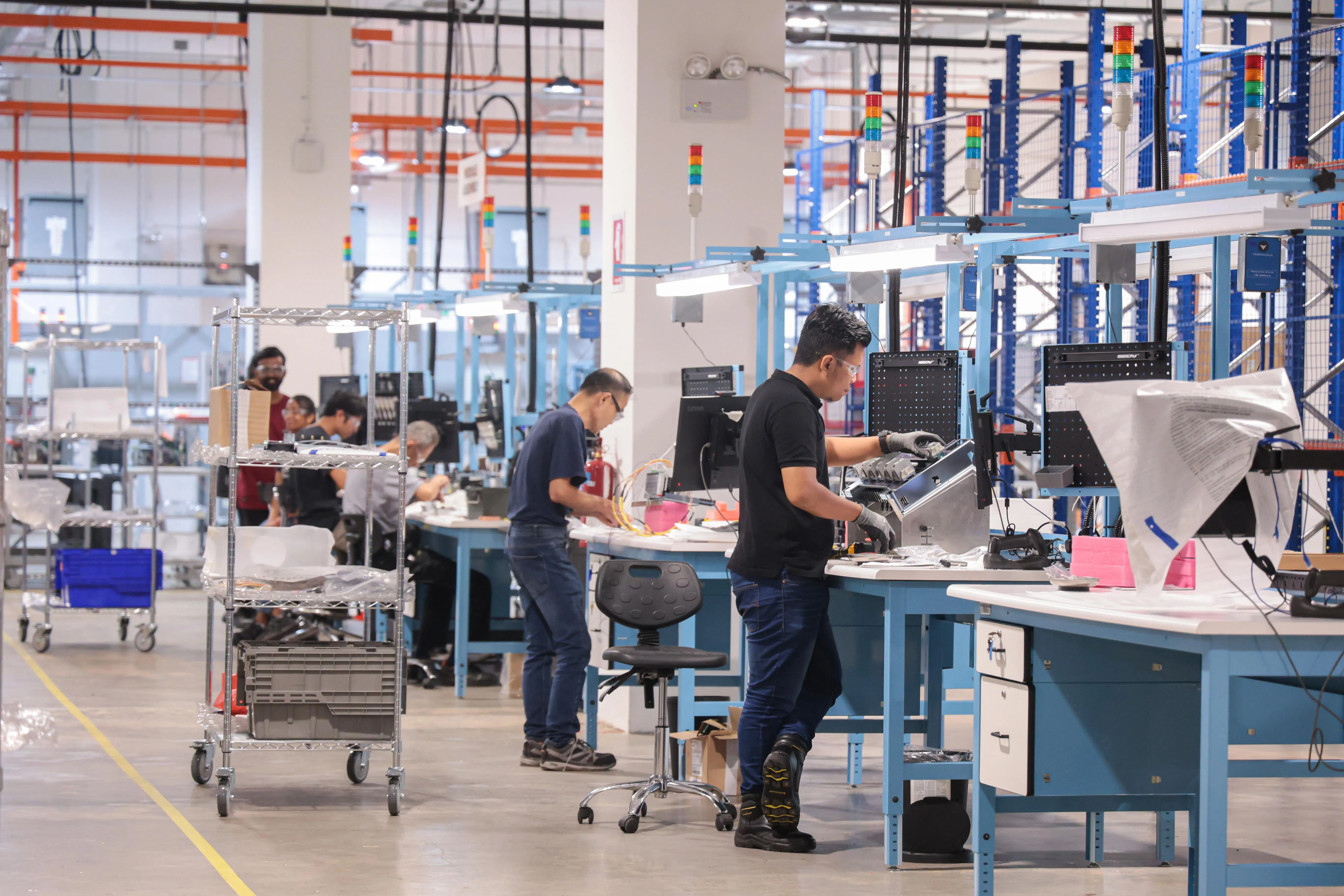[SINGAPORE] Front-loading activity amid uncertainty over US President Donald Trump’s tariffs supported Singapore’s industrial production growth in April, economists said after the latest prints were released on Monday (May 26).
The Republic’s manufacturing output gained 5.9 per cent year on year in April, slipping from the previous month’s upwardly revised 6.8 per cent growth. Still, the latest print more than doubled the median 2.5 per cent expansion forecast by private-sector economists in a Bloomberg poll.
Manufacturing for the key electronics cluster picked up, data from the Economic Development Board showed.
Excluding the volatile biomedical sector, April’s industrial production jumped 8.1 per cent on year. This was up from March’s revised gain of 6 per cent.
On a seasonally adjusted monthly basis, manufacturing output grew 5.3 per cent in April, reversing from March’s 2.7 per cent contraction. Excluding biomedical manufacturing, output rose 4.7 per cent month on month, widening from 1.9 per cent in the preceding month.
Performance by cluster
Half of the clusters tracked reported increases in production year on year.
BT in your inbox

Start and end each day with the latest news stories and analyses delivered straight to your inbox.
Output in the key electronics cluster expanded 15.2 per cent in April, after increasing 11.2 per cent in the preceding month.
All segments within the cluster except electronic modules and components (-10.2 per cent) grew. Manufacturing was up for the infocomms and consumer electronics (67.8 per cent), semiconductors (11.7 per cent) and computer peripherals and data storage (11.3 per cent) segments.
The cluster’s robust production growth is broadly in line with the accelerated expansion of electronics domestic exports during the same period, said DBS senior economist Chua Han Teng.
He added that this reflects “still-resilient global chips demand and possibly some front-loading of orders due to a temporary US tariff exemption on electronics imports, including semiconductors”.
Standard Chartered chief economist Edward Lee pointed to front-loading as a potential reason for the cluster’s “strong” showing.
Other clusters posting growth were:
Lee noted that things are business as usual for some clusters. Transport engineering’s aerospace engineering is “roaring Trump 2.0 or not”, he said. The segment’s output was up 39.5 per cent in April.
“Travel and logistics are still healthy and kicking,” he said.
In contrast, output slid for:
-
Biomedical manufacturing (-1.1 per cent)
-
Chemicals (-3.2 per cent)
-
General manufacturing (-15.2 per cent)
The weak performance of general manufacturing could be a result of the gloomy macro narrative, Lee said.
Said Chua: “Singapore’s export-oriented manufacturing sector remains vulnerable to the heightened unpredictability and uncertainty from the US tariff roller coaster in 2025, although it is receiving temporary relief from the 90-day US reciprocal tariff truce.”
He also noted that the uncertainties around sectoral levies remain, while Trump’s threats of imposing US tariffs on imports from the European Union and on smartphones from companies such as Apple and Samsung underscore the ongoing heightened global trade policy uncertainty.
The front-loading of exports in H1 this year will eventually be followed by “a payback” through decelerating trade and industrial production in H2, he also said, adding that base effects will materialise in the second half.


